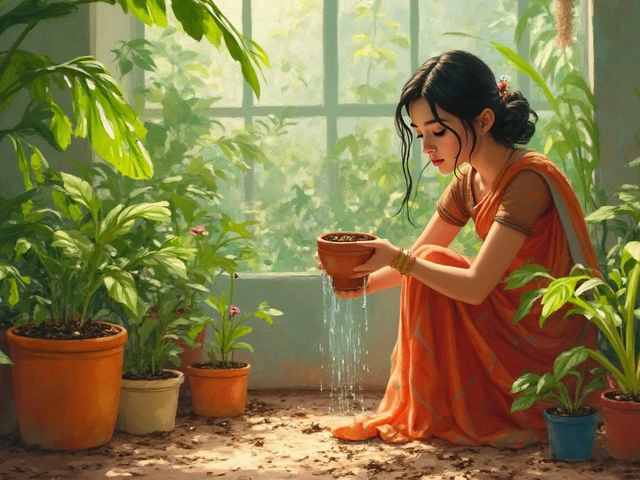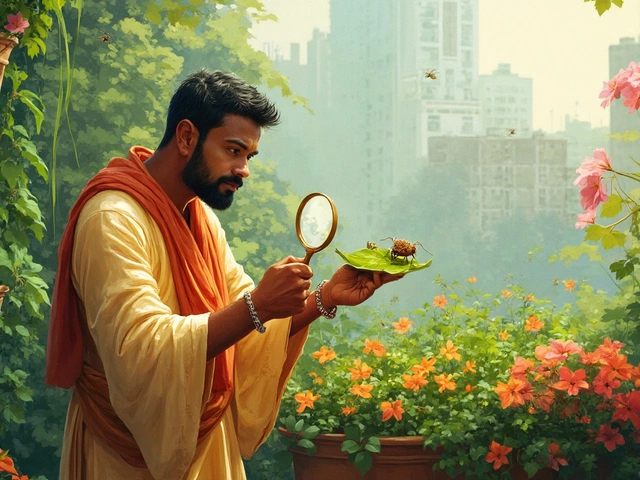Self‑Sufficient Gardening: Simple Steps to Grow More and Waste Less
Ever wished your garden could feed you, save water, and stay healthy without a lot of hassle? You’re not alone. A self‑sufficient garden means you use what you have, recycle waste, and keep the ecosystem balanced. Below are easy‑to‑follow ideas that fit Indian climates and budgets.
Water Smart, Save Money
Water is the biggest expense in most Indian gardens. Drip irrigation is the cheapest way to give plants exactly what they need. Bury the drip lines just a few centimeters deep – deep enough to stay cool but shallow enough for easy repairs. If you’re starting out, use simple polyethylene tubing and a few pressure regulators; you’ll cut water use by half and see healthier roots.
Collect rainwater in barrels or underground tanks. A 200‑litre barrel can water a 10‑square‑metre garden for a week in summer. Use a simple tap or a gravity‑fed hose to distribute the water. No fancy pumps required.
Make Soil Work For You
Heavy, compacted soil suffocates roots. Lighten it with locally available organic matter: kitchen waste, cow dung, or leaf litter. Mix one part compost with two parts garden soil and you’ll notice better drainage within a week.
Companion planting, or "sister plants," helps soil health too. Plant nitrogen‑fixing beans next to heavy feeders like cabbage. The beans add nutrients while the cabbage shades the beans, keeping the soil cool.
Turn kitchen scraps into zero‑waste fruit snacks. Peel mangoes, apples, or any fruit, dry the skins, and blend them into natural fertilizer. This keeps waste out of the bin and feeds your garden.
Vertical gardens are perfect for small balconies. Use trellises, hanging pots, or recycled bottles. Herbs, strawberries, and even dwarf melons thrive on a wall, freeing up ground space for root crops.
Indoor plants are part of a self‑sufficient setup, too. A few well‑placed houseplants improve indoor air and can be harvested for fresh herbs. Keep them on a sunny windowsill, water only when the top inch of soil feels dry, and mist in winter if the air gets too dry.
Remember, the goal isn’t perfection but progress. Start with one drip line, add compost to one corner, and watch the results. Over time, these small changes add up to a garden that feeds you, saves water, and stays healthy without constant buying of chemicals or extra water.
Ready to make your garden self‑sufficient? Pick a single tip from above, try it this week, and enjoy the difference. Your garden, your food, your savings – all in one place.
Permaculture Gardening: What It Means and How to Get Started
Permaculture gardening goes way beyond planting a few veggies—it's all about working with nature, not against it. This article breaks down what permaculture really means, why it grabs the attention of modern gardeners, and how it helps turn your backyard into a low-maintenance, productive ecosystem. You'll find real-world tips to get started, learn from quirky examples, and discover how to make your garden work smarter, not harder. If you want food, flowers, and a garden that pretty much takes care of itself, you're in the right place.
About
Sustainable Gardening
Latest Posts


Victorian Terrace House: Key Features, Layout, and How to Spot One
By Alden Thorne Sep 9, 2025

Spot Overwatering vs Underwatering: Your Indoor Plant's Vital Signs
By Alden Thorne Mar 19, 2025

Most Sustainable Plant in the World: A Real Game-Changer for Your Garden
By Alden Thorne Apr 23, 2025

